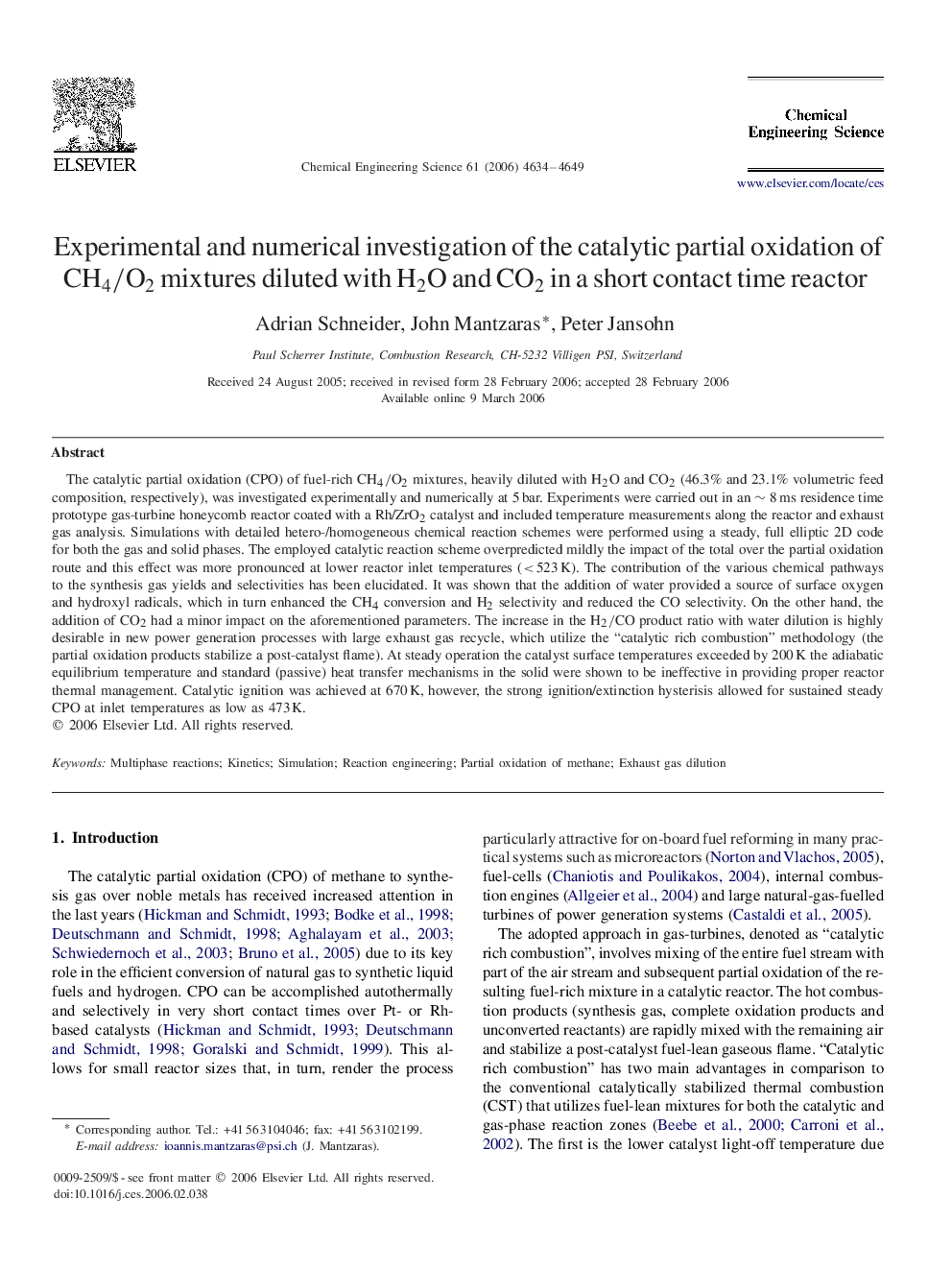| کد مقاله | کد نشریه | سال انتشار | مقاله انگلیسی | نسخه تمام متن |
|---|---|---|---|---|
| 158716 | 457016 | 2006 | 16 صفحه PDF | دانلود رایگان |

The catalytic partial oxidation (CPO) of fuel-rich CH4/O2CH4/O2 mixtures, heavily diluted with H2OH2O and CO2CO2 (46.3% and 23.1% volumetric feed composition, respectively), was investigated experimentally and numerically at 5 bar. Experiments were carried out in an ∼8ms residence time prototype gas-turbine honeycomb reactor coated with a Rh/ZrO2ZrO2 catalyst and included temperature measurements along the reactor and exhaust gas analysis. Simulations with detailed hetero-/homogeneous chemical reaction schemes were performed using a steady, full elliptic 2D code for both the gas and solid phases. The employed catalytic reaction scheme overpredicted mildly the impact of the total over the partial oxidation route and this effect was more pronounced at lower reactor inlet temperatures (<523K). The contribution of the various chemical pathways to the synthesis gas yields and selectivities has been elucidated. It was shown that the addition of water provided a source of surface oxygen and hydroxyl radicals, which in turn enhanced the CH4CH4 conversion and H2H2 selectivity and reduced the CO selectivity. On the other hand, the addition of CO2CO2 had a minor impact on the aforementioned parameters. The increase in the H2/COH2/CO product ratio with water dilution is highly desirable in new power generation processes with large exhaust gas recycle, which utilize the “catalytic rich combustion” methodology (the partial oxidation products stabilize a post-catalyst flame). At steady operation the catalyst surface temperatures exceeded by 200 K the adiabatic equilibrium temperature and standard (passive) heat transfer mechanisms in the solid were shown to be ineffective in providing proper reactor thermal management. Catalytic ignition was achieved at 670 K, however, the strong ignition/extinction hysterisis allowed for sustained steady CPO at inlet temperatures as low as 473 K.
Journal: Chemical Engineering Science - Volume 61, Issue 14, July 2006, Pages 4634–4649